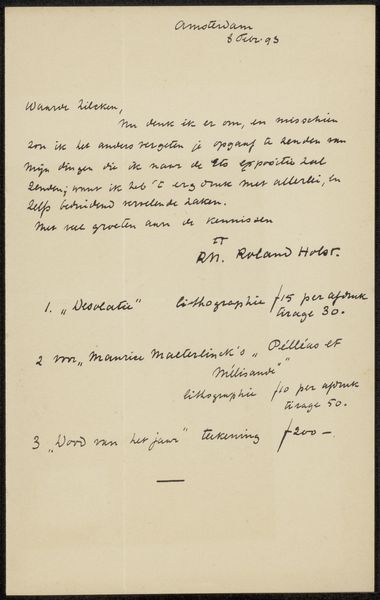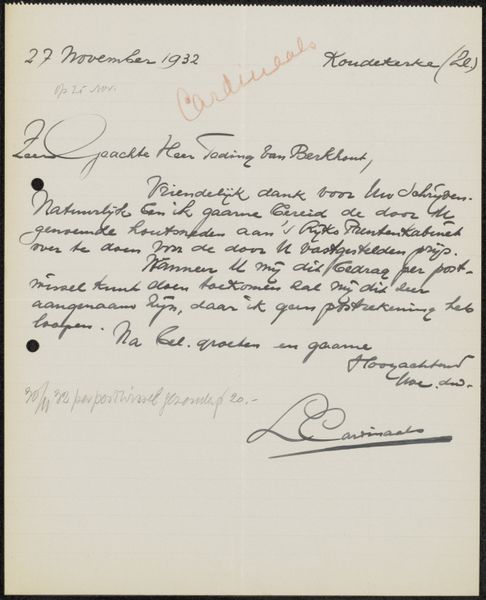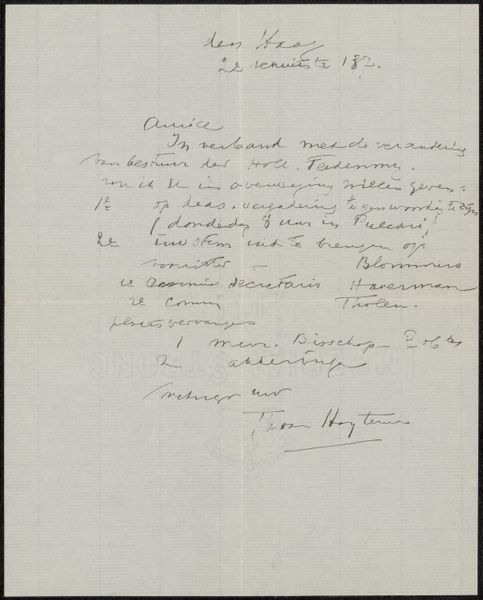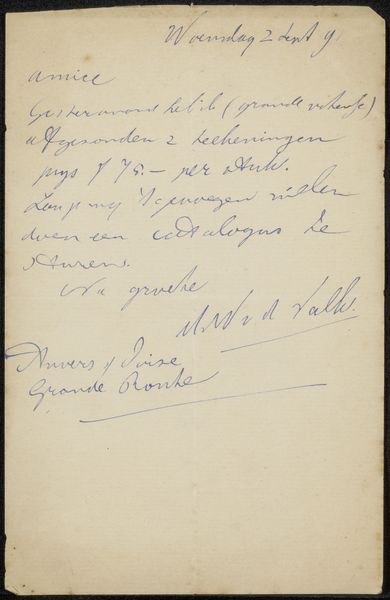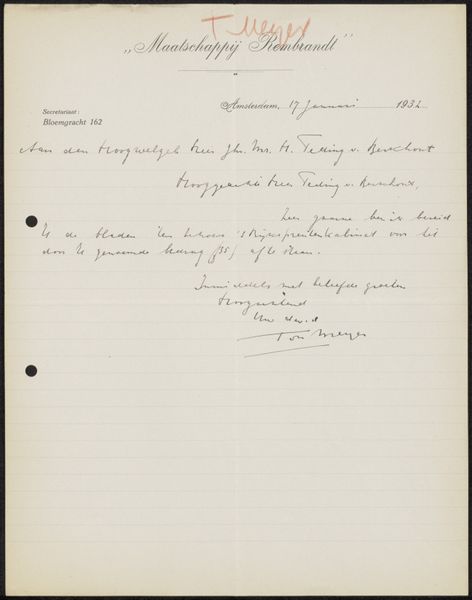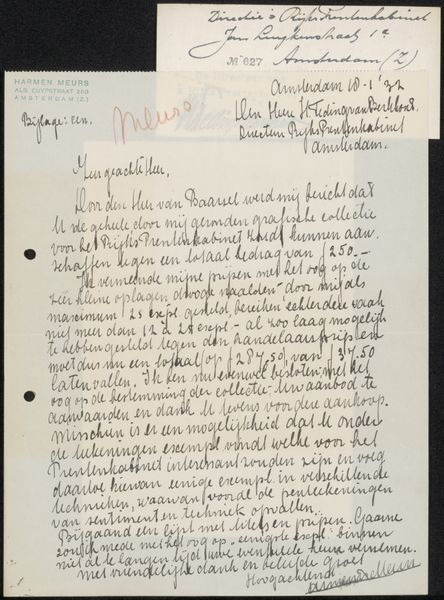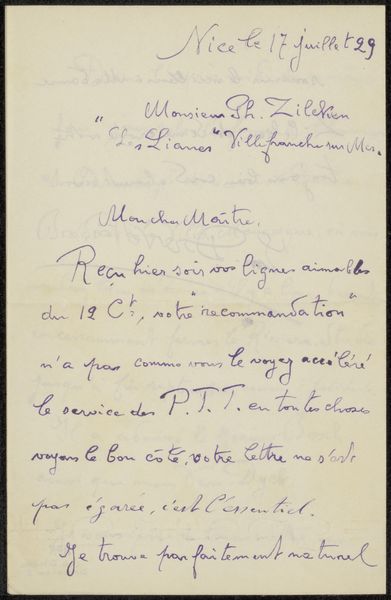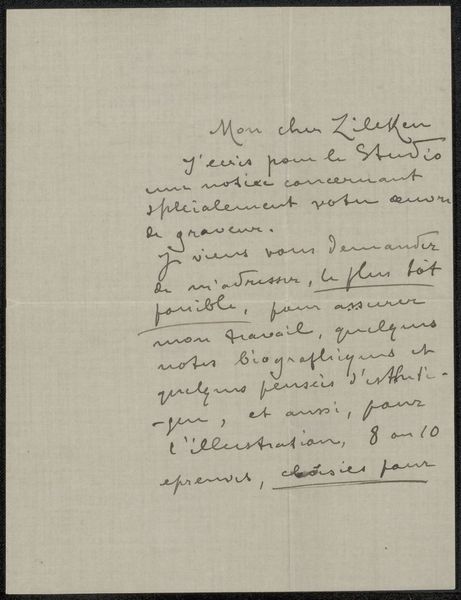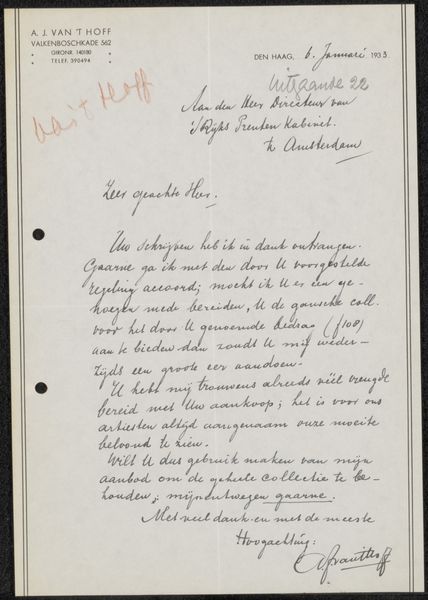
drawing, paper, ink
#
portrait
#
drawing
#
paper
#
ink
#
calligraphy
Copyright: Rijks Museum: Open Domain
Editor: This is a letter titled "Brief aan jonkheer Hendrik Teding van Berkhout", possibly from 1931, by Mommie Schwarz. It’s an ink drawing on paper, and it’s dominated by dense calligraphy. I am curious about the social dynamics behind a letter like this. What story does the context tell? Curator: Well, first off, "Mommie Schwarz," or Samuel Schwarz, was Jewish, so context is absolutely critical here. Understanding the precarity of Jewish artists in Europe during the rise of fascism completely alters how we perceive even the most mundane seeming document. Who was Hendrik Teding van Berkhout? What position of power did he hold at the Rijks prentenkabinet? A seemingly polite business letter might carry an unspoken weight when we consider Schwarz's position in Dutch society at this moment. Do you see any traces of this precariousness in the visual details, perhaps the formality of the script or something else? Editor: It's interesting that you bring that up because it almost feels intentionally ornate in its penmanship; perhaps the formality itself is part of navigating the societal landscape, maybe a need to adhere to certain expectations to gain visibility, or to be taken seriously in a world stacked against the Jewish population.. Curator: Precisely. It also calls attention to questions of accessibility and gatekeeping within the art world. Who gets a seat at the table, and what strategies did marginalized artists employ to even be considered? Consider the labour involved, not only in creating art, but in seeking patronage and recognition within exclusionary structures. Do you find anything relevant for our current times? Editor: Definitely! The issues of access and representation you mention, I can definitely see clear connections between the historic landscape back then and the current social, cultural and political struggles around those topics. Curator: Exactly. The letter is a deceptively simple object. When you start asking *who* gets to be remembered, and *how* they have to navigate oppressive social constructs to even be recognized at all, seemingly unimportant mundane things such as the content of this piece offer a more thorough lens for consideration and contextualization of historical events, artistic styles, and power hierarchies of past and present. Editor: Absolutely. Thank you so much. This has totally changed my perception of the artwork and how it's a powerful tool that invites us to reflect critically upon what our today mirrors from yesterday.
Comments
No comments
Be the first to comment and join the conversation on the ultimate creative platform.
